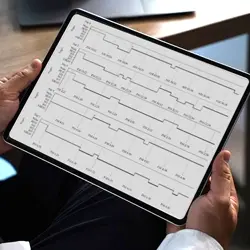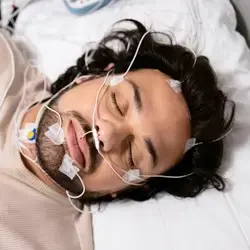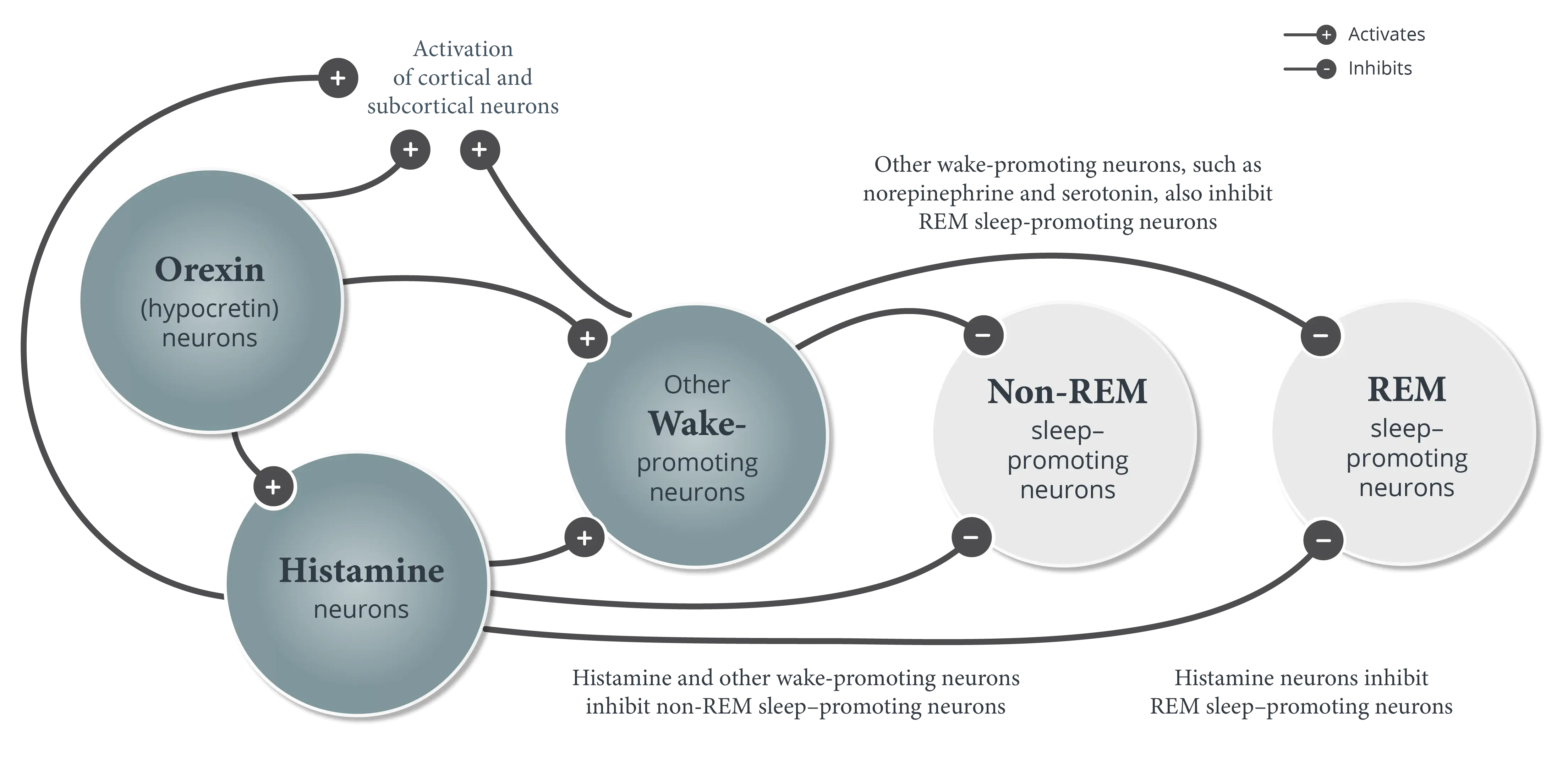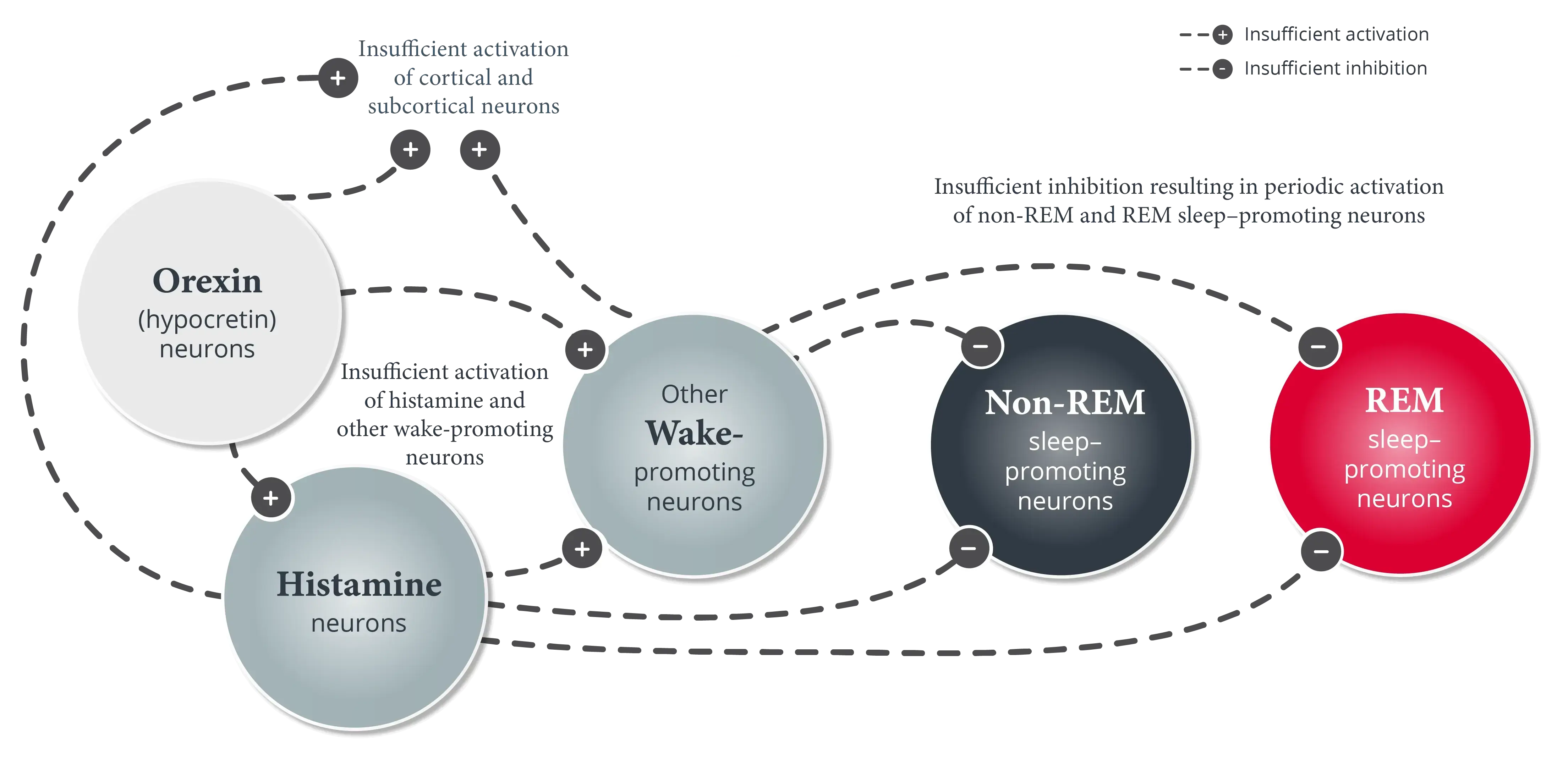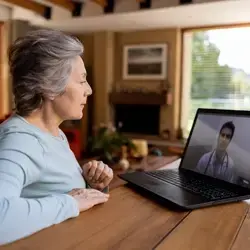

Best Practices for Clinical Interviews in Adult Patients
This content was developed using literature published in peer-reviewed journals and other materials.
Best Practices for Clinical Interviews in Adult Patients
This content was developed using literature published in peer-reviewed journals and other materials.
Overview
A comprehensive and discerning clinical interview is an important component of the narcolepsy diagnosis and assessment of ongoing symptoms.
The below content provides insights to help enhance your clinical interview skills when evaluating narcolepsy symptoms and their impact on patients.
Interviewing to assess excessive daytime sleepiness (EDS)
EDS can cause changes in wakefulness that may be difficult to recognize.1,2 Patients with EDS may use vague terms to describe their sleepiness; they may say they’re “tired all the time” or “fatigued,” have a “lack of energy,” or are experiencing “brain fog.”1,3 Additionally, they may not recognize the extent of their sleepiness and may even deny being sleepy.1
However, even less obvious manifestations of EDS can have a substantial impact.2,4 The perspective of friends and family members is important when talking to your patients about their sleepiness.1
When interviewing a patient about their EDS, listen carefully, and evaluate for the following:
Characteristics5
- How often do you experience EDS?
- Since it started, has there been any relief from EDS?
More obvious manifestations5,6
- Do you ever fall asleep without warning?
- How often do you need to take naps during the day?
- How long do planned or unplanned naps last?
- Do you feel refreshed after napping? If so, for how long until sleepiness returns?
Less obvious manifestations1,4,6
- What does sleepiness feel like to you?
- Do you experience fatigue?
- Have you had any difficulties with your mood, like irritability?
- Do you ever do things or have conversations with people and not remember them happening?
Propensity for sleepiness or dozing in different situations1,6,7
- Do you tend to experience EDS when you are sitting still/inactive?
- Do you ever experience EDS in more active situations, like when you are talking or eating?
Impact1,3,6,8
- Are there activities you avoid because of your EDS?
- How has EDS affected your daily life?
- What is the impact of EDS on your quality of life?
Interviewing to assess cataplexy
Cataplexy can be difficult to recognize in clinical settings, and patients may not recognize or report all symptoms of cataplexy.2,6,9 Including someone who knows the patient well can help during the clinical evaluation, as this person may have noticed less obvious signs of cataplexy.6
When interviewing a patient about their cataplexy, listen carefully, and evaluate for the following:
Identifying cataplexy
Pattern of muscle weakness4,6,10,11
- Do you ever experience any complete collapse?
- Do your knees ever buckle or give out?
- Do you experience any sagging or muscle weakness in your face or neck, like slurred speech, sagging of the jaw, or head dropping?
- Do you feel like you are clumsy or drop things a lot?
- Do you ever feel any odd muscle sensations, like tingling or twitching?
Emotional triggers6,9,10
- Do you ever experience muscle weakness with certain emotions?
- What types of emotions trigger your cataplexy? Happiness? Laughter or humor? Anger? Excitement? Stress or anxiety? Tension? Anticipation? Embarrassment?
Assessing cataplexy
Situational triggers6,9,10
- Do you ever experience muscle weakness when you are in certain situations?
- What types of situations trigger your cataplexy? Telling or hearing a joke? Making a witty remark? Being tickled? Being the center of attention? Unexpectedly encountering a friend or acquaintance? Being startled? Remembering happy or emotional events? Intimate moments? Romantic thoughts or moments? Experiencing an orgasm?
Impact3,10,12
- Do you ever suppress your emotions or withdraw from family and friends?
- Do you avoid situations that may trigger a cataplexy attack?
Interviewing to assess other symptoms associated with narcolepsy
Narcolepsy signs and symptoms go beyond EDS and cataplexy.6 Although not present in all patients with narcolepsy, symptoms like disrupted nighttime sleep, hypnagogic hallucinations, and sleep paralysis can also have a substantial impact on patients.5,6
When interviewing patients about other symptoms, ask about the presence and potential impact of4-6,11,13:
- Sleep paralysis
- Hypnagogic/hypnopompic hallucinations
- Vivid dreams at night
- Vivid dreams during daytime naps
- Bizarre dream content
References
- Ahmed IM, Thorpy MJ. Clinical evaluation of the patient with excessive sleepiness. In: Thorpy MJ, Billiard M, eds. Sleepiness: Causes, Consequences and Treatment. Cambridge University Press; 2011:36-49.
- Overeem S, Reading P, Bassetti CL. Narcolepsy. Sleep Med Clin. 2012;7:263-281.
- Center for Drug Evaluation and Research (CDER). The Voice of the Patient: A Series of Reports From the U.S. Food and Drug Administration’s Patient-Focused Drug Development Initiative – Narcolepsy. US Food and Drug Administration; 2014. Accessed January 6, 2025. https://www.fda.gov/media/88736/download
- Thorpy M, Morse AM. Reducing the clinical and socioeconomic burden of narcolepsy by earlier diagnosis and effective treatment. Sleep Med Clin. 2017;12(1):61-71.
- Thorpy MJ, Dauvilliers Y. Clinical and practical considerations in the pharmacologic management of narcolepsy. Sleep Med. 2015;16(1):9-18.
- American Academy of Sleep Medicine. International Classification of Sleep Disorders. 3rd ed, text revision. American Academy of Sleep Medicine; 2023.
- Johns M, Hocking B. Daytime sleepiness and sleep habits of Australian workers. Sleep. 1997;20(10):844-849.
- Daniels E, King MA, Smith IE, Shneerson JM. Health-related quality of life in narcolepsy. J Sleep Res. 2001;10(1):75-81.
- Anic-Labat S, Guilleminault C, Kraemer HC, Meehan J, Arrigoni J, Mignot E. Validation of a cataplexy questionnaire in 983 sleep-disorders patients. Sleep. 1999;22(1):77-87.
- Overeem S. The clinical features of cataplexy. In: Baumann CR, Bassetti CL, Scammell TE, eds. Narcolepsy: Pathophysiology, Diagnosis, and Treatment. Springer-Verlag New York; 2011:283-290.
- Pelayo R, Lopes MC. Narcolepsy. In: Lee-Chiong TL, ed. Sleep: A Comprehensive Handbook. John Wiley & Sons, Inc.; 2006:145-150.
- Broughton R, Ghanem Q, Hishikawa Y, Sugita Y, Nevsimalova S, Roth B. Life effects of narcolepsy in 180 patients from North America, Asia and Europe compared to matched controls. Can J Neurol Sci. 1981;8(4):299-304.
- Dauvilliers Y, Lopez R. Parasomnias in narcolepsy with cataplexy. In: Baumann CR, Bassetti CL, Scammell TE, eds. Narcolepsy: Pathophysiology, Diagnosis, and Treatment. Springer-Verlag New York; 2011:291-299.

